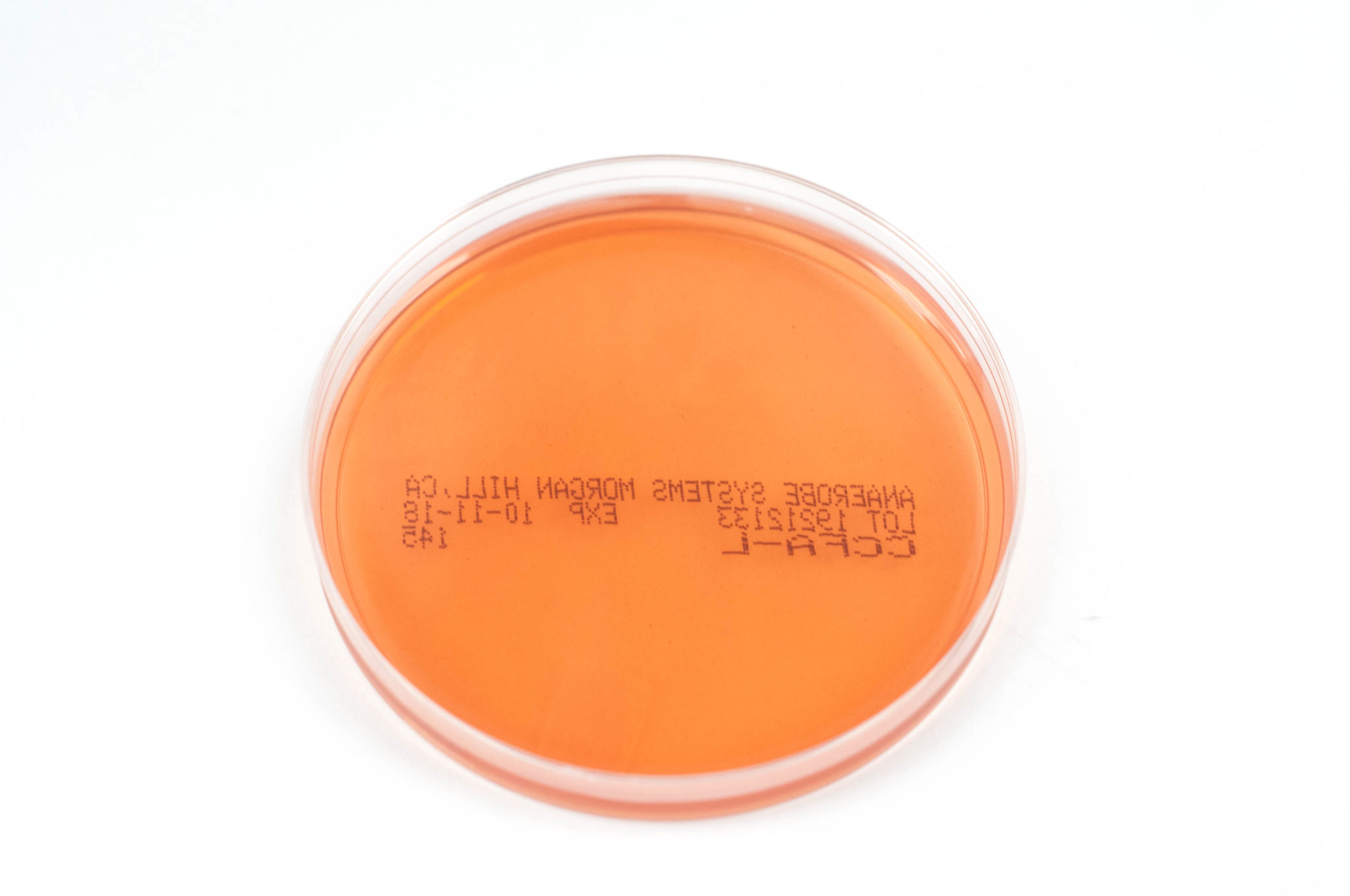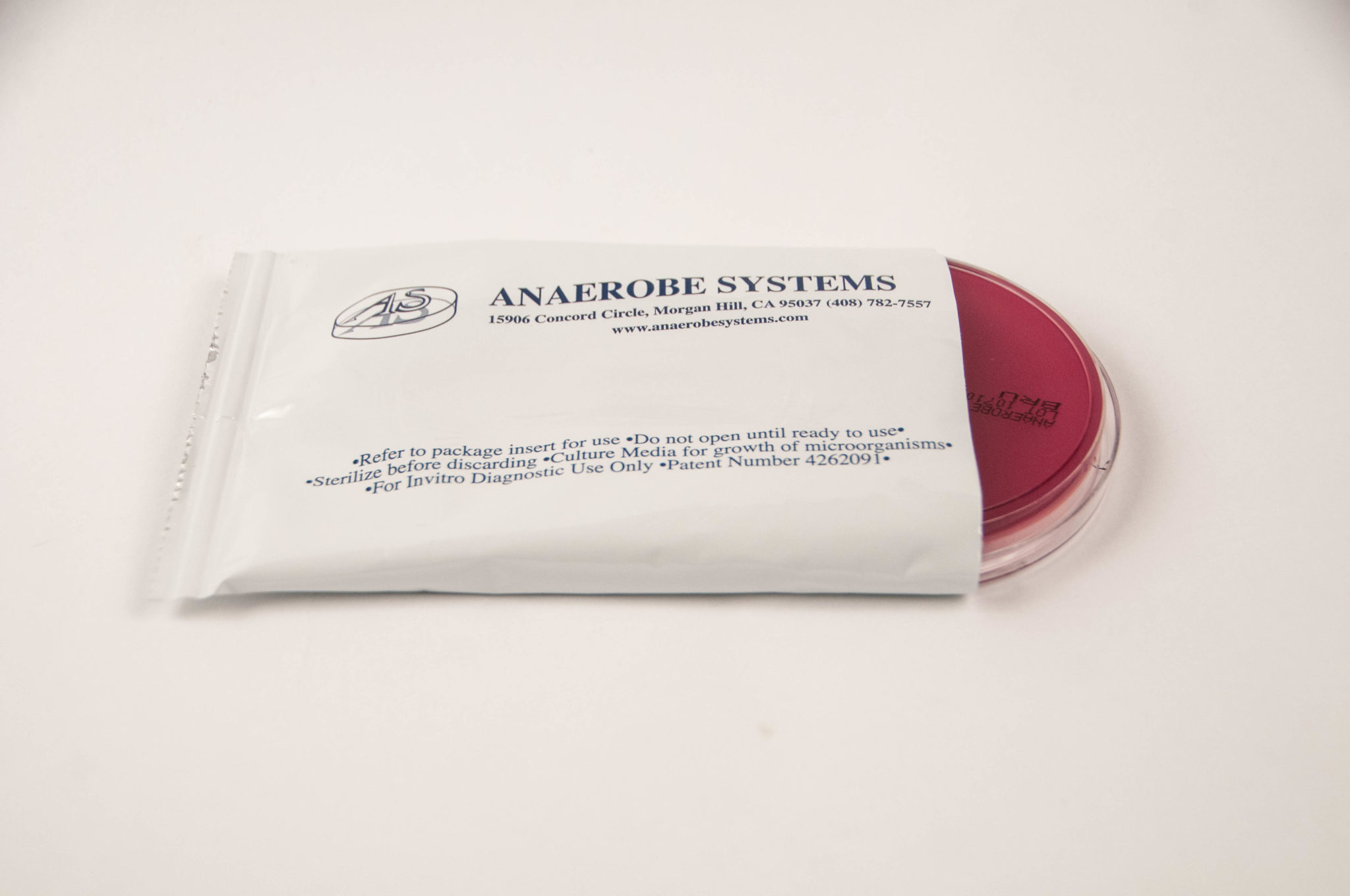Cycloserine Cefoxitin Fructose Agar with Lysozyme (CCFA-L) is an enriched, selective, and differential media used for the isolation and presumptive identification of Clostridium difficile, a recognized cause of pseudomembranous (antimicrobial agent-associated) colitis.
Cycloserine-Cefoxitin Fructose Agar with Lysozyme – CCFAL
| Catalog # |
Description |
Qty |
Price |
| AS-2133 | CCFA-L mono plate | 1 plate |
$5.96 |
Non-stock item: 100 pack minimum order, allow 2-4 weeks for delivery.
Product Description & Summary
CCFA-L is an enriched, selective, and differential media for the isolation of Clostridium difficile. The basic nutritive base consists of animal peptones and fructose and is supplemented with cefoxitin and cycloserine at concentrations that inhibit the growth of most normal fecal flora. Cycloserine will inhibit gram-negative bacteria, while cefoxitin will inhibit both gram-positive and gram-negative organisms. Clostridium difficile is not inhibited on CCFA-L media, and when grown on this media, will exhibit a characteristic yellow, ground-glass colonial morphology. Neutral red is added as a pH indicator and lysozyme is added to aid in the germination of spores. The presence of C. difficile will turn the indicator from pink/orange to yellow, due to the utilization of amino acids by the organism causing an increase in the pH. This media is prepared, dispensed, and packaged under oxygen-free conditions to prevent the formation of oxidized products prior to use.
Interpretation of Results & Limitations
If used properly, CCFA-L supports good growth of members of C. difficile. After 24-48 hours, most colonies of C. difficile are large, circular, and yellow, with the yellow coloration extending 2 –3 mm beyond the colony into the initially pink/orange media. These colonies fluoresce golden yellow/chartreuse under long-wavelength UV light. Most other bacteria are inhibited on this media. At 48 hours, colonies of most other organisms (e.g. Lactobacilli and yeast), which may grow, are very small (pinpoint to 0.5 mm in diameter) and do not fluoresce golden-yellow.
CCFA-L will not provide complete information for identification of bacterial isolates. Rare strains of C. difficile may be inhibited. Plates must be examined no later than after 48 hours of incubation for optimal selectivity. Significant numbers of colonies, other than C. difficile, may grow after 48 hours of incubation. A test for aerotolerance should be used to confirm that each colony type is an obligate anaerobe. Consult reference materials for additional information.
Quality Control
The following organisms are routinely used for quality control performance testing at Anaerobe Systems.
| Organism Tested | ATCC # | Results | Time | Special Reaction |
| Bacteroides fragilis | 25285 | No Growth | ||
| Enterococcus faecalis | 29212 | No Growth | ||
| Clostridium sporogenes | 3584 | No Growth | ||
| Clostridium beijerinckii | 8260 | No Growth | ||
| Proteus mirabilis | 12453 | No Growth | ||
| Clostridium perfringens | 13124 | No Growth | ||
| Clostridium innocuum | 14501 | No Growth | ||
| Clostridium sordellii | 9714 | No Growth | ||
| Clostridium difficile | 9689 | Growth | 24 hrs | Yellow coloration, chartreuse fluorescence |
| Clostridium difficile | 700057 | Growth | 24 hrs | Yellow coloration, chartreuse fluorescence |
Product Storage & Shelf Life
Storage: Upon receipt, store at 2 – 8oC in original container until used. Avoid overheating or freezing. Do not use media if there are signs of deterioration (shrinking, cracking, or discoloration due to oxidation of media) or contamination. The expiration date applies to the product in its original packaging and stored as directed. Do not use product past the expiration date shown on the container.
Shelf Life: 90 days from date of manufacture.



